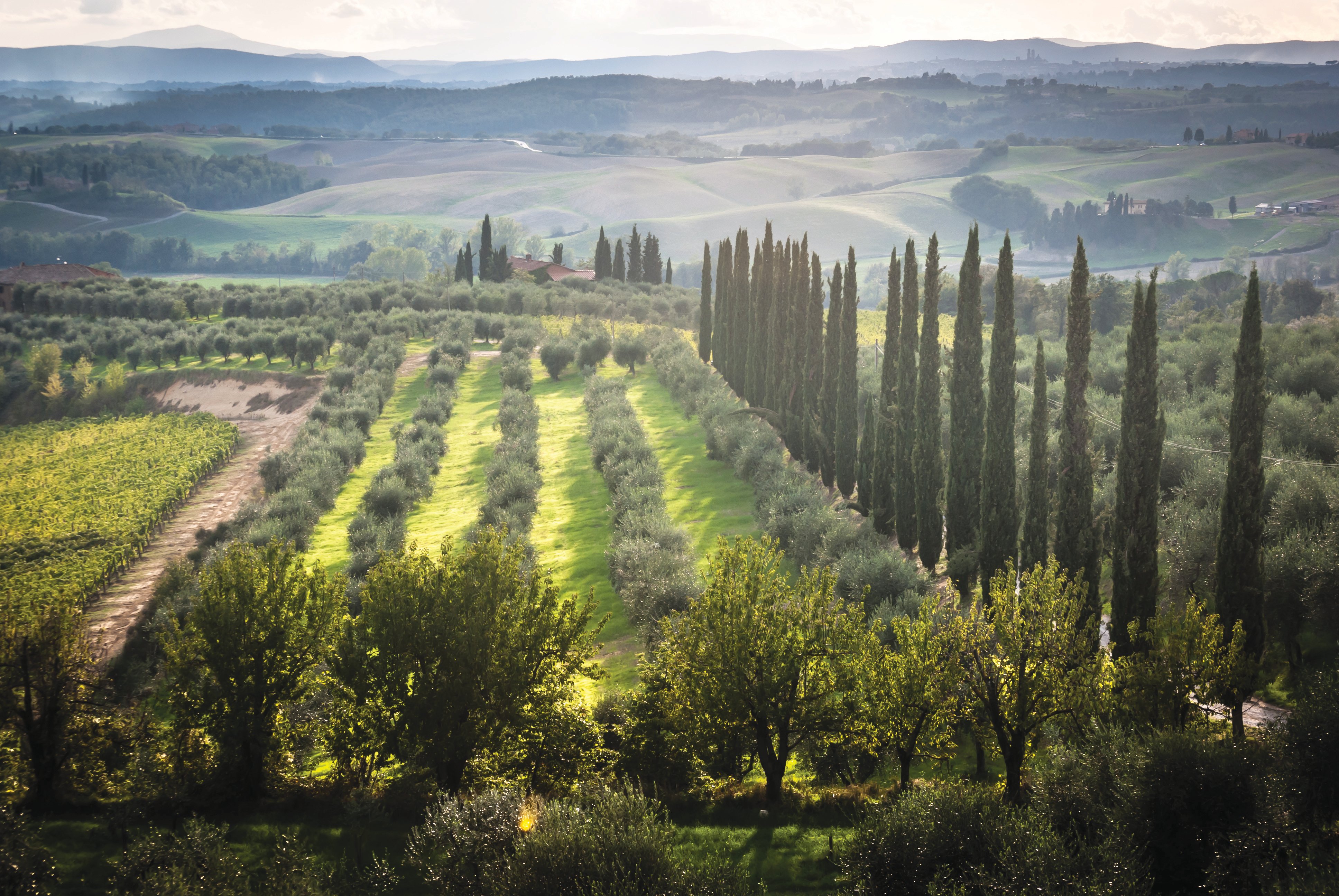ON SEPTEMBER 24, 1716, Cosimo III de’ Medici, Grand Duke of Tuscany, demarcated the four growing communes of the Chianti region. In case their names have slipped your mind, they are: Chianti Classico, Pomina/Chianti Rufina, Carmignano and Valdarno di Sopra.
With one stroke of his quill, Cosimo III established the world’s first wine appellation, predating by 40 years the setting of the boundaries for port wine production in the Douro Valley by Portugal’s prime minister, the Marquis of Pombal.
If you ask a Canadian to name one Italian wine, I’ll lay odds the answer will be Chianti. And for Canadians of a certain age, the name will immediately conjure up images of bulbous, straw-covered bottles that ended up in neighbourhood trattorias caked with lava-like flows of candle wax.
The Italian name for the straw-corseted bottle is fiasco, and that word in English — ironically — summed up the state of the scandal-ridden Chianti industry in the 1950s and ’60s. That was the era when the white grape Trebbiano made up to 30 per cent of many mass-market Chiantis and when oceans of dubious wine, as palatable as red ink, flowed around the world.
Apart from downright fraud, much of the problem had to do with the original recipe for the blend. This formula was written in stone in the mid-19th century by Baron Bettino Ricasoli, who would later become prime minister of the kingdom of Italy. Ricasoli stated that Chianti should be a blend of 70 per cent Sangiovese grapes, 15 per cent Canaiolo and 15 per cent Malvasia Blanca.
Cynical wine writers have suggested that the stated proportions — particularly the inclusion of 15 per cent of the white Malvasia — reflected the percentages of these varieties that the baron grew in his vineyard at the time.
White grapes did nothing to enhance the flavour or the aging potential of Chianti. And it wasn’t until 1971 that a seminal wine made by Marquis Piero Antinori sparked a revolution in the region and caused a headache for the regulators.
The wine was Tignanello and it created a new category, dubbed Super Tuscan. Not only did Antinori and his oenologist, the late Giacomo Tachis, dispense with white grapes entirely, but in place of Canaiolo they blended their Sangiovese with Cabernet Sauvignon. To add to the heresy, they aged the wine not in the traditional large, oval, Slavonian oak barrels called botte, but in the much smaller, new 225-litre French barriques.
Because it did not conform to denominazione di origine controllata (DOC) Italian wine classification regulations, Tignanello could not call itself Chianti and had to be designated on the label as a humble vino da tavola (table wine), even though it was priced higher than other producers’ Chianti Classico Riserva offerings.
The phenomenal success of Tignanello on the international market spawned a plethora of Super Tuscan wines that thumbed their noses at the DOC appellation.
The Italians are nothing if not pragmatic. To herd these bastard Sangiovese wines back into the fold and to resolve the vino da tavola anomaly, in 1992 the Italian government created a new wine denomination: indicazione geografica tipica (IGT). The newly minted regulations allowed producers to use 100 per cent Sangiovese if they so desired or to blend with up to 15 per cent of such international varieties as Cabernet Sauvignon, Merlot and Syrah. The result is that today there are literally hundreds of IGT wines produced in Tuscany.
The heartland of the Chianti region is Chianti Classico, 260 square kilometres of hilly woodland and great vistas of vines between two of Italy’s most beautiful cities: Florence in the north and Siena in the south. The driving distance between the cities, through some of the most spectacular winescape on the planet, is 78 kilometres. If you’re in a hurry it’s an hour and a quarter on the motorway — or 30 minutes the way the locals drive.
Only those producers within the Classico zone can put the Gallo nero symbol on the neck of their bottles. The black rooster dates back to 1384 when it was chosen as the emblem of the League of Chianti, an association of the villages of Gaiole, Castellina and Radda, arguably where the best Chiantis still come from.
But today there is more than one Chianti. In 1932 the map of the Chianti region was redrawn and six satellite areas were added around the Classico zone: Colli Aretini (around the town of Arezzo), Colli Fiorentini (Florence), Colline Pisane (Pisa), Colli Senesi (Siena), Montalbano (south of Pistoia) and Rùfina (northeast of Florence).
The Chianti zone shares the Sangiovese grape with other regions within Tuscany: Brunello di Montalcino (80 kilometres south of Florence, where the wines are made with 100-per-cent Sangiovese); Vino Nobile di Montepulciano (40 kilometres southeast of Siena, where they call the grape Prugnolo gentile); and Maremma on the Mediterranean coast (where in addition to Sangiovese they grow the region’s best Cabernet Sauvignon and Merlot grapes).
But it is the Chianti Classico zone that reverberates in the mind and its wines that charm the palate. No visitor can forget the views of those hilltop towns with their red-tiled roofs and elegant cedars. The English discovered the delights of this region years ago and bought up its farmhouses, so much so that it is known in England today as Chianti-shire.
Tony Aspler is the author of 17 books on wine, including his latest, Canadian Wineries.





